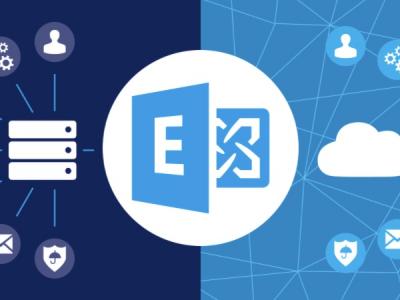Hello!
 The online global market is one of the busiest places in the world. Millions of individuals and companies spend a lot of time online. From shopping to banking, all sorts of sensitive data are shared across the internet. It is, therefore, essential to ensure that you are secured when sharing vital information. So many organizations fall, victim to cyber-attacks because they assume hackers are only after money. Note that details like passwords of your customers and credit card numbers are other things that hackers scout for online.
The online global market is one of the busiest places in the world. Millions of individuals and companies spend a lot of time online. From shopping to banking, all sorts of sensitive data are shared across the internet. It is, therefore, essential to ensure that you are secured when sharing vital information. So many organizations fall, victim to cyber-attacks because they assume hackers are only after money. Note that details like passwords of your customers and credit card numbers are other things that hackers scout for online.
To ensure safety, many organizations running businesses that require sensitive data to be shared are advised to secure their exchange server. That is because this is a platform where all the data exchange in companies takes place. The exchange server allows for the collaboration of emails, contacts list, and calendar through mobile devices and web-based systems. Usually designed to be used within an organization, some of the steps that should be taken to ensure security include;
Monitor the Exchange server
You will need to spend a lot of time keeping an eye on the server. That is because you will want to ensure that it is not under threat of getting hacked or failing. There are various tools that you can use to monitor your exchange servers but always ensure that you should not go for the wrong choice.
Use a firewall
 There are two kinds of firewall that you can go with if you want to keep your exchange server safe. The most common one is the windows firewall with advanced security. It is usually free and comes as a built-in program. Other than being free, it is easy to use and preconfigured to let allow the exchange traffic to pass. The second type of firewall is the forefront of protection for exchange. This is a more advanced firewall, and unlike the windows firewall, it can also detect spyware, worms, viruses, and spam. Depending on what you are protecting, you should be able to choose to make the right decision.
There are two kinds of firewall that you can go with if you want to keep your exchange server safe. The most common one is the windows firewall with advanced security. It is usually free and comes as a built-in program. Other than being free, it is easy to use and preconfigured to let allow the exchange traffic to pass. The second type of firewall is the forefront of protection for exchange. This is a more advanced firewall, and unlike the windows firewall, it can also detect spyware, worms, viruses, and spam. Depending on what you are protecting, you should be able to choose to make the right decision.
Get an Exchange SSL certificate
What makes an Exchange Server SSL Certificate a vital consideration for securing your exchange servers is that it encrypts messages. This creates some tunnel between users and the exchange servers. That is because a hacker will not be able to tap into the message. Note that there are various kinds of SSL certificates and you will want to choose according to the size of the organization you are running.
Protect client machines
 There are different ways through which viruses and other threats can get into your computer. To keep the off, you will need to find a reliable anti-virus or malware to protect the Microsoft windows client machines. This is important because one of your customers’ computer can be infected. To prevent the servers’ form getting affected as well, you can use a third-party anti-virus program to detect these treats and get rid of them.
There are different ways through which viruses and other threats can get into your computer. To keep the off, you will need to find a reliable anti-virus or malware to protect the Microsoft windows client machines. This is important because one of your customers’ computer can be infected. To prevent the servers’ form getting affected as well, you can use a third-party anti-virus program to detect these treats and get rid of them.
Apply new patches every month
Microsoft releases new patches monthly to be used with the exchange servers. These patches are made after a weakness has been discovered in the system. By applying these patches, you will be protecting your exchange from certain vulnerability. Before implementing these patches, however, it is vital to test them before using them on your production servers.
Keep your client access server in a separate network perimeter
Microsoft recommends that you keep the client access server in a private network protected by a network perimeter. If you place the users, servers in the same network perimeter, it is vital to switch firewall ports to allow for communication with a private network.
Create a block list and filter senders
 There are various blocklist tools that you can use to filter users. Blacklists allow you to distinguish the senders that your truth and those that you suspect might have malicious programs attached to their messages. The block-list works with the same concept as the ones in phones. You can choose who you to reach you and those whose words cannot get to you. Exchange servers block-list tools are available for free since they come built-in on Outlook.
There are various blocklist tools that you can use to filter users. Blacklists allow you to distinguish the senders that your truth and those that you suspect might have malicious programs attached to their messages. The block-list works with the same concept as the ones in phones. You can choose who you to reach you and those whose words cannot get to you. Exchange servers block-list tools are available for free since they come built-in on Outlook.
Implement Data Loss Protection
You can easily share documents containing vital information like your social security number without knowing it. However, by implementing data loss protection measures, you can control the kind of emails to be shared. Data loss protection works by thoroughly scanning your email for any data that you have specified as private. If one is found, the outgoing email is interrupted. Hackers will get more attracted to your exchange servers if they know that such vital information is shared freely.
 Run the Exchange best practice analyzer
Run the Exchange best practice analyzer
This should go a long way in ensuring that your exchange server is functioning as it is supposed to. That is because it works by gathering all the configuration information defined by Microsoft. It then analyzes the data and provides you with a report as the administrator with all the necessary configurations to make.
Filter attachments
Some attachments will look suspicious from the word go. For example, if you are expecting clients to submit word files, a .exe file will seem suspicious. There is a way of preventing such attachments from reaching your exchange server and contaminating everything.
Conclusion
 Organizations from across the world spend a reasonable amount of money for cybersecurity. That is because they understand that to protect their systems, they need to motivate their cybersecurity team properly. That is because hackers are always devising new ways of causing trouble. It is, however, good to know that securing your exchange server does not have to cost you a fortune. Microsoft provides a tool that you can use to do that for free. However, you may want to combine many strategies to strengthen your security like an SSL certificate. You should also ensure that your exchange server is updated with the right configurations and patches because outdated ones make your company vulnerable to threats.
Organizations from across the world spend a reasonable amount of money for cybersecurity. That is because they understand that to protect their systems, they need to motivate their cybersecurity team properly. That is because hackers are always devising new ways of causing trouble. It is, however, good to know that securing your exchange server does not have to cost you a fortune. Microsoft provides a tool that you can use to do that for free. However, you may want to combine many strategies to strengthen your security like an SSL certificate. You should also ensure that your exchange server is updated with the right configurations and patches because outdated ones make your company vulnerable to threats.
Thank you!
Subscribe to our newsletter! Join us on social networks!
See you!






